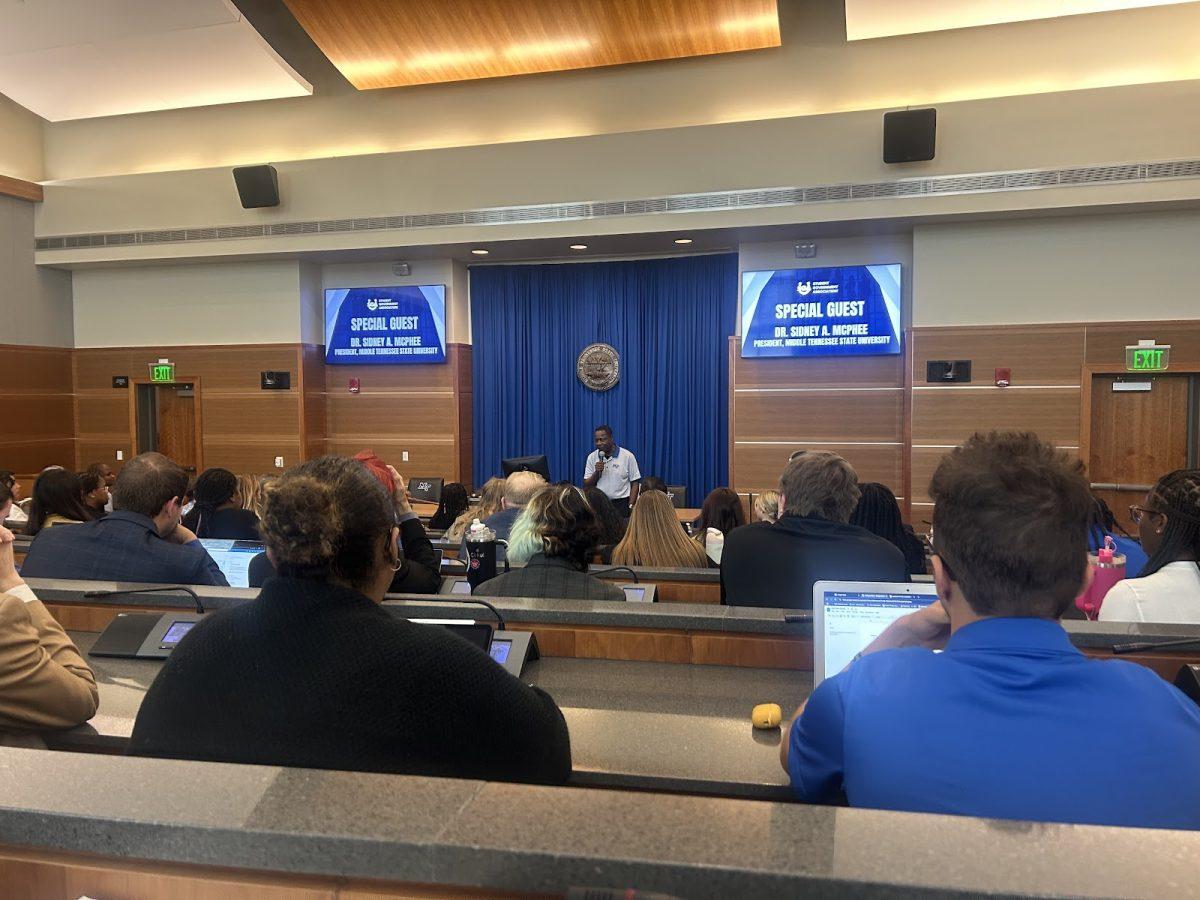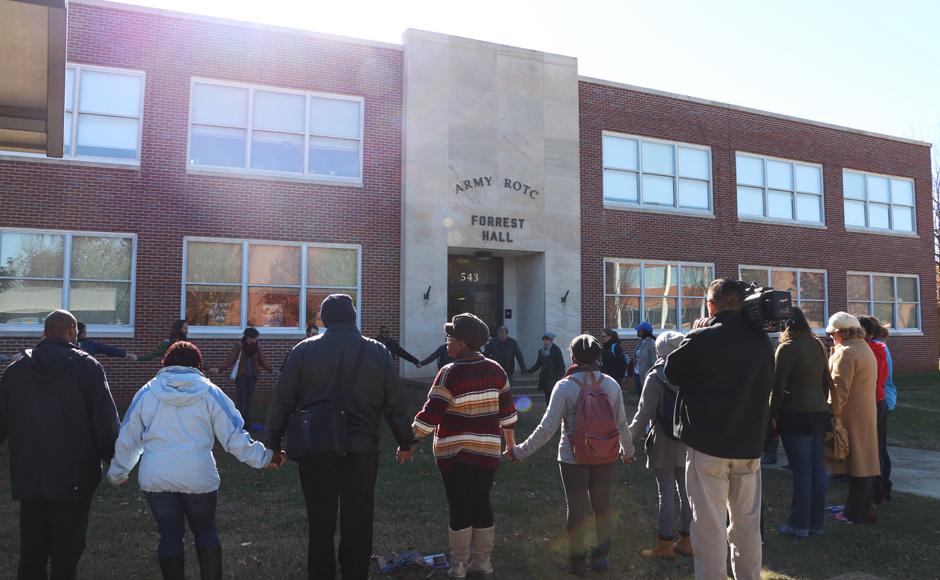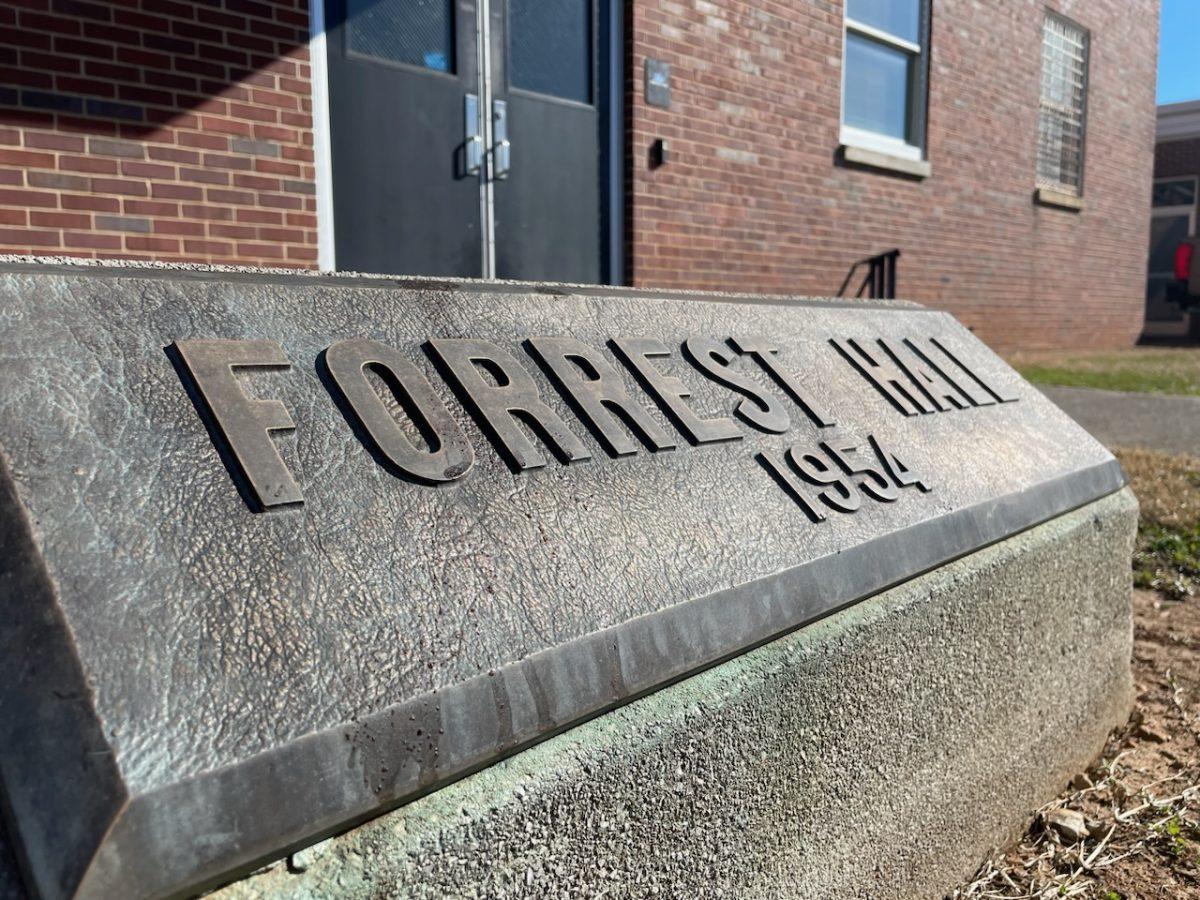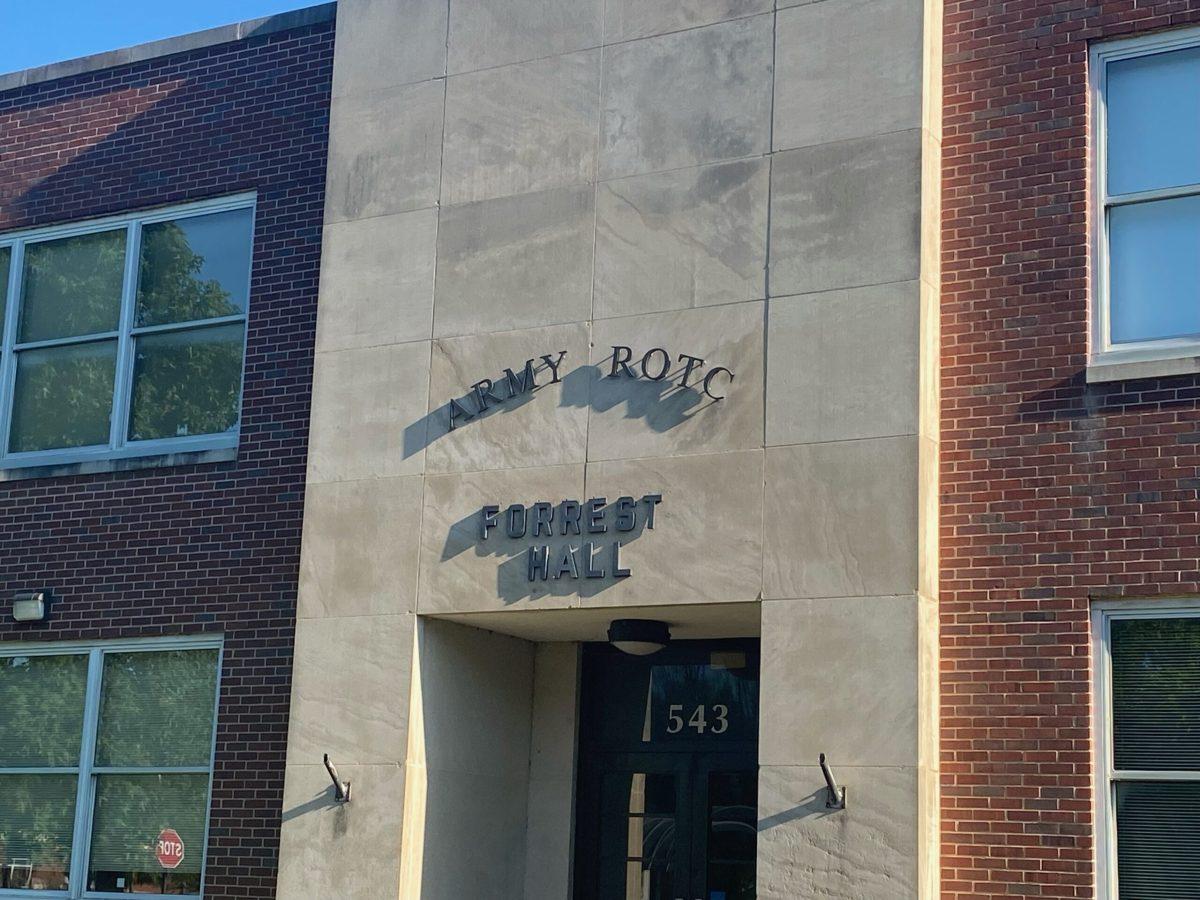Photo by Sarah Grace Taylor//Managing Editor
Story by Devin Ross // Staff Writer
His name is on a building, but once upon a time, Nathan Bedford Forrest was the university’s mascot.
From the university’s inception in 1911 until 1934, there were no titles given to the sports teams, only a few unofficial nicknames including the Normalites, the Teachers and the Pedagogues. Understandably, these names failed to register with students and sports-fans alike, and in 1933 The Daily News Journal held a competition for choosing the best name.
The winning pick was the Blue Raiders, a name inspired by the Colgate University Red Raiders, a successful, at the time, sports team from Hamilton, New York.
Throughout the 1930s and 1940s, the college went without an official mascot, but by 1950 it had begun to incorporate the image of Confederate General Nathan Bedford Forrest into campus life. Students who were similar to Forrest in stature were employed to dress up the like the General and ride on horseback at football games and Homecoming rallies. In 1951, The Midlander (the university yearbook) featured his likeness and that was the first official appearance of Forrest as MTSU’s mascot.
The decade saw an influx of Confederate imagery on campus amid the 1954 Brown v. Board of Education Supreme Court decision and the Confederate Centennial. It was not uncommon to see students flying Confederate flags at football games as the band played Confederate War songs.
In 1956, The Midlander staff commissioned an artist from the Nashville Banner to depict Forrest brandishing a pistol, leading his cavalry, Confederate flag in tow. Below the illustration reads “Nathan Bedford Forrest’s spirit symbolizes the spirit of Middle Tennessee State College.”
After campus integration in 1962 and the college’s transition to university status in 1965, attitudes on campus changed and the appearance of Forrest waned. The image of a Confederate soldier remained as the university’s mascot, but it was simply referred to as the Raider.
In 1968, the university discontinued Forrest as the official mascot and created a committee specifically to choose a more generic, less controversial mascot who would be more palatable to minorities on campus and the community. Their choice was a Zorro-like St. Bernard named Beauregard. This was apparently a compromise as the new mascot was dressed like an infantryman whose name likely referenced P.G.T Beauregard, another Confederate general.
In 1970, after Beauregard had failed to inspire sports fans and controversy stirred due to crosses being burned on campus, the mascot’s name was changed to Lord Byron after the British romantic poet. The graphic depiction of Lord Byron was similar to Beauregard. He appeared to be a musketeer-like infantryman yielding a sword. While images of Byron graced the merchandise sold at Phillips Bookstore, an actual St. Bernard was housed at a campus house and could be seen walking the sidelines on game day. After the name Lord Byron failed to strike a chord, the dog’s name was changed to Old Blue.
The mid-70s saw yet another mascot change as “Winks Choice” or “Raider 1,” began to appear at university sporting events. This was essentially the same mascot they had 10 years prior: a general riding a horse, except now rather than the general being the focal point, the focus had shifted to his horse. However after fan complaints that the mascot upheld a legacy of racism and problems of fitting the horse into the gym the mascot was also discontinued.
In 1978, MTSU president M.G Scarlett, faced with cries to omit images of Forrest from campus life, finally removed his image from the university’s official seal and adopted the modern MTSU logo, which can still be seen around campus today. The same year, the university adopted a new mascot: an ambiguous swash-buckler-like superhero character simply named the Blue Raider. However, he too was short-lived.
Old Blue had not been completely washed from the public’s consciousness because he was phased back in as the official mascot by 1980. The new, “Old Blue” lacked some of the infantry regalia of his predecessors and was basically just a big, fuzzy blue dog. Old Blue seemed to keep fans content, but failed to create a sensation.
In 1996, MTSU president James E. Walker decided that the university needed a new look. He assembled a committee of students, faculty and fans to decide on a new mascot and logo. After group meetings over the course of two years, they came to a decision.
On Jan. 17, 1998, during the halftime of a well publicized men’s basketball game against Tennessee State University, the public laid their eyes on Lightning for the first time. The unveiling had been built up in the media, including ads on ESPN and billboards around Murfreesboro and Nashville, which read “Lighting Strikes.”
Lightning is said to be a nod to MTSU’s accomplished aerospace and agriculture programs, but what’s certain is that he was inspired by Greek mythology. Pegasus, a winged horse carried lightning bolts to Zeus. The name Pegasus is also derived from the word lightning, making Lightning the least controversial mascot in MTSU’s history.
This article appeared in our March 21 print edition. For more of our Forrest Hall coverage, click here.
For more news, follow us at www.mtsusidelines.com, on Facebook at MTSU Sidelines and on Twitter at @Sidelines_News.
To contact News Editor Amanda Freuler, email newseditor@mtsusidelines.com







